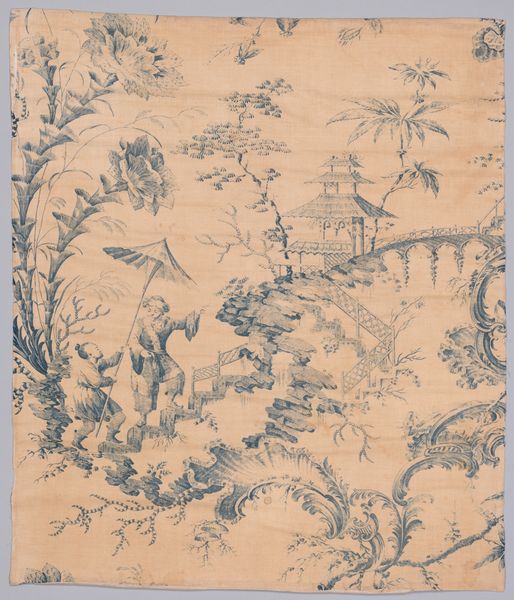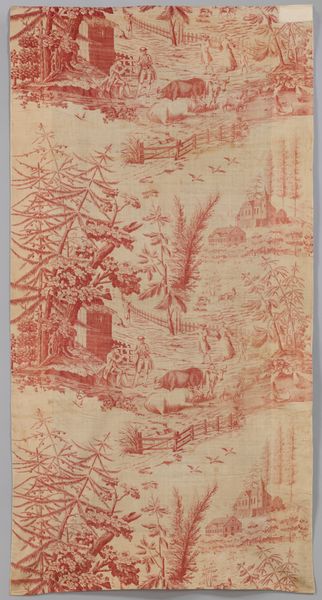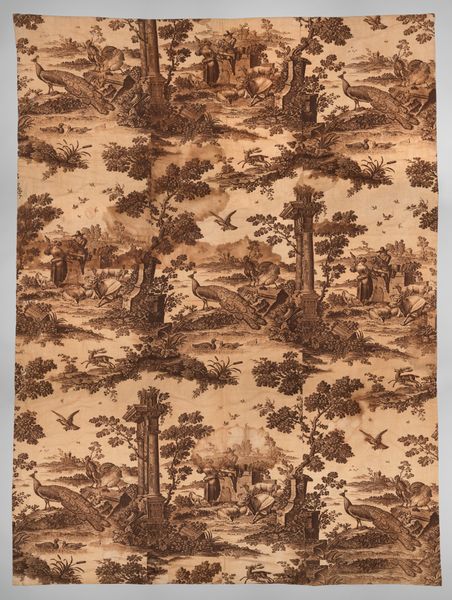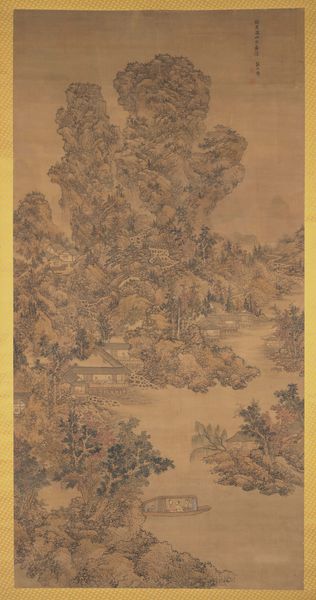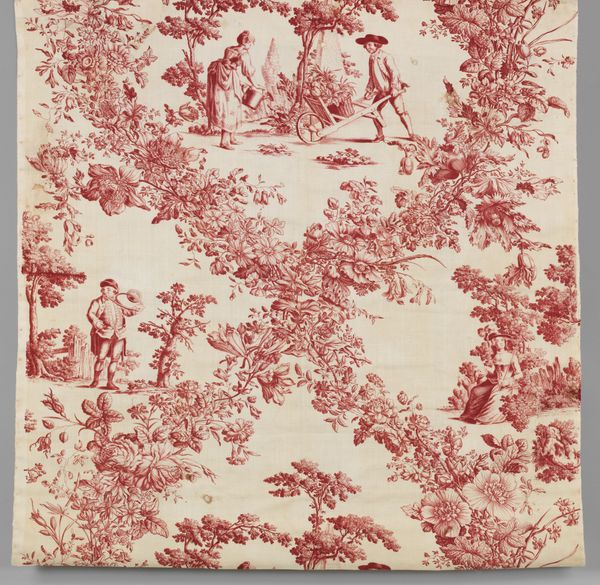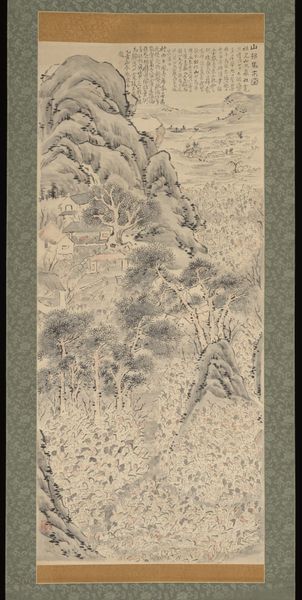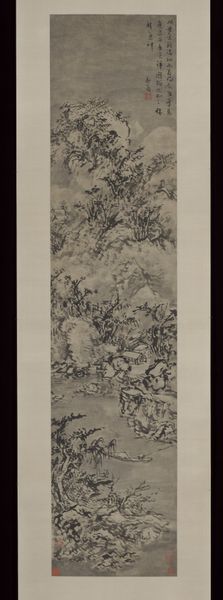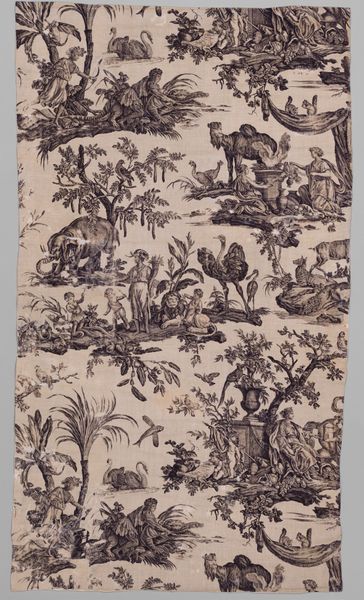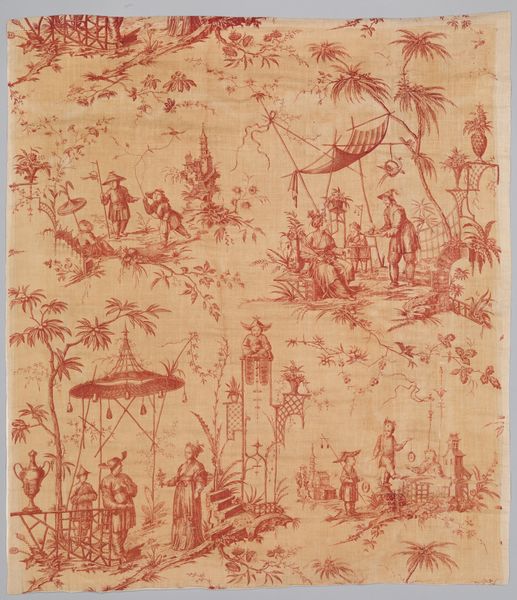
print, etching, engraving
#
neoclassicism
# print
#
etching
#
landscape
#
history-painting
#
decorative-art
#
engraving
Dimensions: L. 61 1/2 x W. 35 1/2 inches 156.2 x 90.2 cm
Copyright: Public Domain
Curator: This delightful print, known as "Piece," dates from around 1765-1775. Crafted using etching and engraving, it is now housed at the Metropolitan Museum of Art. Editor: My first thought is “pastoral reverie.” It feels incredibly calming, almost hypnotic, in its repetition of motifs. Curator: Absolutely, its landscape style aligns perfectly with the Neoclassical yearning for a return to simpler, perhaps idealized, times. These decorative arts often subtly reflect the broader power dynamics of their era. The longing for an imagined past, especially by the elite, always begs the question of who gets to define and benefit from this selective nostalgia. Editor: The ruins, in particular, stand out. There's a melancholy in depicting them. Those fragmented columns, partly obscured by foliage—they carry so much historical weight. Classical ruins in art frequently serve as memento mori, a symbolic warning about the transience of life and empires. But these are gentler, almost romantic. Curator: You’ve touched upon a key tension here. On one hand, the classical motifs reference imperial power, but the delicate, almost ephemeral rendering in print softens that potential dominance. How might the symbolism of ruins shift when produced for domestic consumption, perhaps by the aspiring bourgeoisie, rather than for monumental public art? Editor: It makes one think about cycles of decay and renewal. Even the birds seem symbolic – messengers between different realms, observing history unfold from the treetops. What might they represent? Freedom? Divine presence? Curator: A poignant connection. Birds have always enjoyed polyvalent symbolism across cultures, and that ambiguity here enhances the print's layered meaning. They are both a decorative element and potentially a subversive one. Their song represents not only nature, but voices beyond the canvas. Editor: This journey into a scene draped with symbolism reveals how artworks, no matter how decorative, act as containers of cultural memory and unspoken social commentaries. Curator: It's a useful reminder that what we consider "decorative" often contains deep, if at times subtle, ideological content worthy of unpacking.
Comments
No comments
Be the first to comment and join the conversation on the ultimate creative platform.

